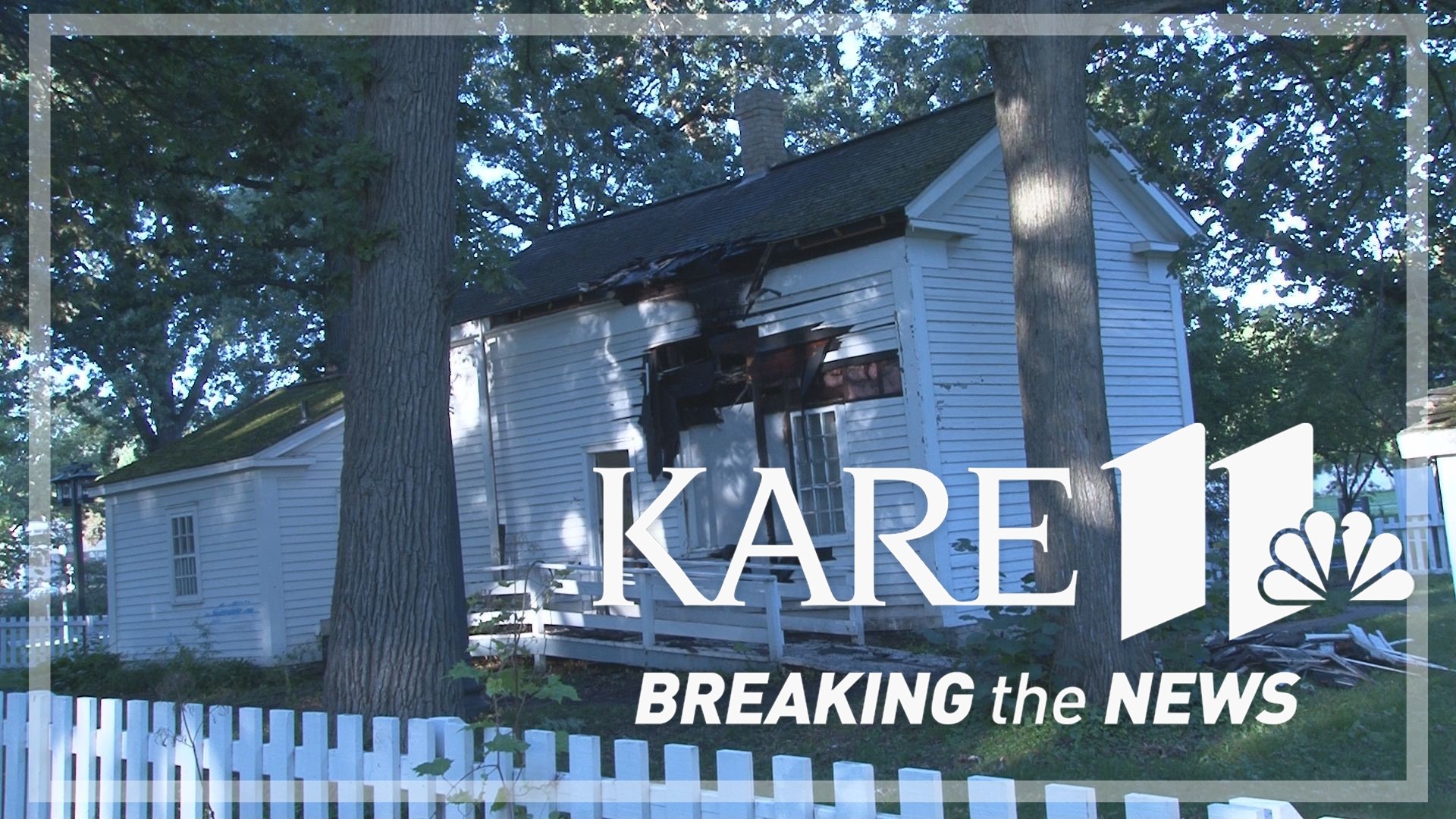MINNEAPOLIS — A piece of Minneapolis history suffered significant damage from an overnight fire Tuesday.
Park Board spokesperson Dawn Sommers confirms that Minneapolis fire crews were called to the John H. Stevens House in Minnehaha Park just before 5 a.m. on reports of a fire.
The home, which serves as a museum, suffered extensive damage in the fire. In a later news release, Minneapolis Fire Department (MFD) officials said fire "burned through the wall on the first floor and extended to the second floor." Further evaluation will be needed to determine if the structure can be salvaged.
Nobody was inside at the time, and no injuries were reported. MFD said crews worked to cover, preserve and protect historical items inside the house "to the best of their abilities."
At this point it is unknown what caused the fire. Minneapolis fire investigators continue to gather evidence at the scene.
The Minneapolis Park and Recreation Board website says John H. Stevens settled in the area that was to become Minneapolis in 1849, and subsequently built the wood frame home in an area near St. Anthony Falls where the Minneapolis Post Office now sits.
"This is like the historic house about the founding of Minneapolis," said Eric Roper, a reporter for the Minneapolis Star Tribune and the man behind Curious Minnesota. "It is the central house to the origin story of Minneapolis."
Roper says there are plenty of reasons to care about the John H Stevens house. Stevens himself became known as the "Father of Minneapolis" and because his house was the first built on the west bank of the Mississippi, Stevens didn't just live there.
"Hennepin County was organized there, the first county board meeting happened there, the school district was founded there, and they decided to call Minneapolis, Minneapolis there," Roper said. "It was just this sort of central hub of this early settlement."
But once the city began to take shape and the so-called "civic and social hub" began to fade from prominence, it presented challenges at times.
"The Minneapolis Journal, which was a predecessor to my newspaper launched a campaign in the 1890s to save the house," he said. "That resulted in thousands of screaming school children hauling this thing to Minnehaha Park from Cedar Riverside."
Yes, according to the Hennepin History Museum, a relay of 10,000 school children and eight horses pulled the home six miles to Minnehaha Park in order to help preserve it.
Roper: "And the thing about that is it's 1896 and historic preservation doesn't exist in a formal capacity in the city until like the 1970s."
Erdahl: "Apparently, they didn't worry about child labor at the time either. 10,000 kids going six miles?"
Eric: "Yes. I mean, the whole city kind of took the day off, in a sense. I mean, all the school kids had the day off. It was a huge spectacle. They clearly, in 1896, were hopeful that it would stand for a very long time and it's amazing that it did stand, so far, for that long."
In recent years, Roper became concerned that the integrity of the home was crumbing after seeing rotting wood siding and roofing. It prompted him to write a story in 2022 asking 'Why has the Park Board allowed the 'birthplace of Minneapolis' to deteriorate?'
"I think the reason I wrote the story is, if it was your house, you would probably do something if there were animal holes in the side, and there was rotting wood," he said. "These are not super hard fixes. You can catch them when they happen."
Before the fire, the Park Board did commit to replacing the roof of the house this fall, with new siding to follow next year. Though that timeline is now in jeopardy, hope is not lost.
"Based on the photos I saw, the good thing is that the fire did not consume the house and obviously this was put out in time to save the house and the house can be repaired, based on what I saw," he said. "And it also needs a new generation to care about it and to sort of keep it going. I mean, it's been standing there, I think the number is 172 years. There's not a lot of things in this state, structures, that we can say have been standing for 172 years."
Watch more local news:
Watch the latest local news from the Twin Cities in our YouTube playlist:

